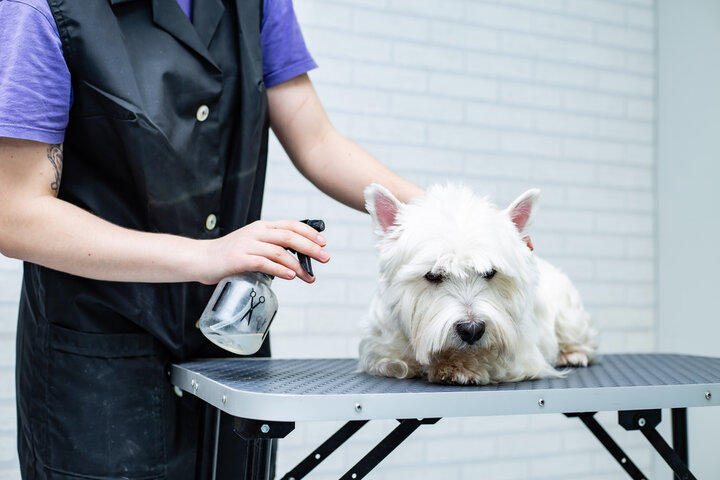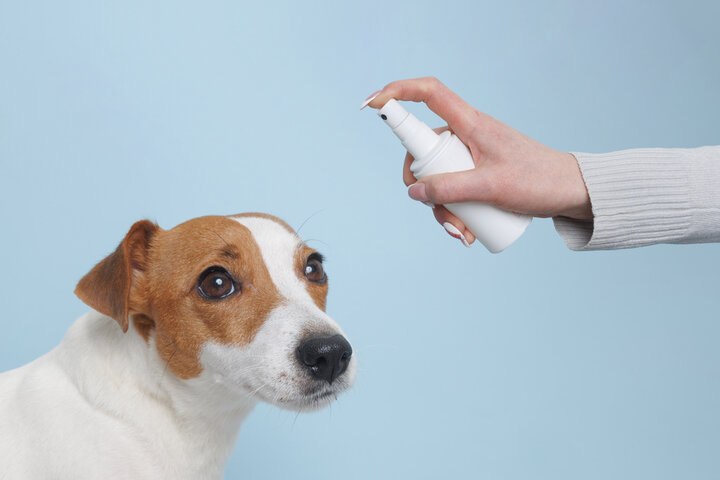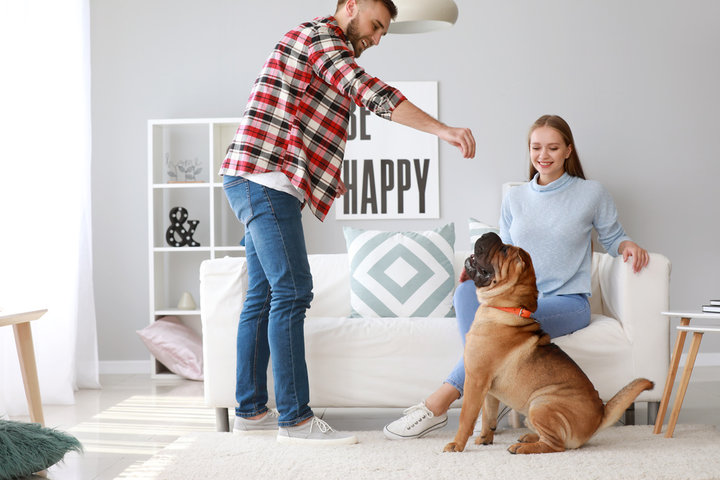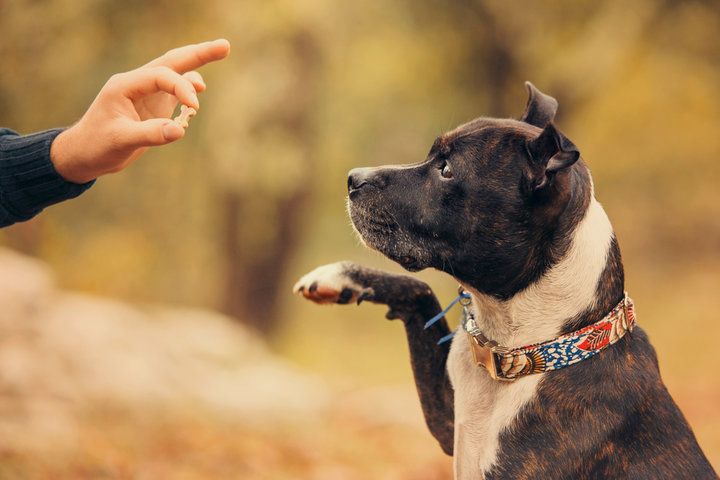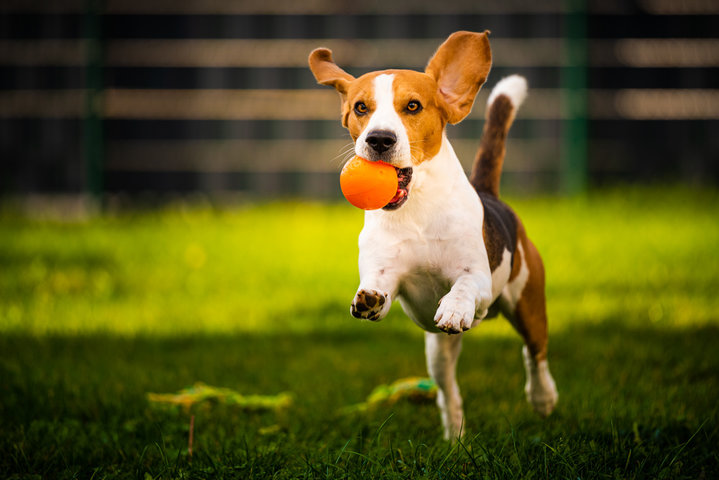
Do you use a spray bottle to correct your dog's unwanted behaviors? Many pet owners do, but are they really effective?
In this article, we'll take a closer look at the surprising truth behind using spray bottles for dog training.
What Is a Spray Bottle and How Is It Used for Dog Training?
A spray bottle is a small plastic container that can shoot a fine mist of water. It's a common tool many dog owners use to correct unwanted behaviors.
The idea is simple: when your pup does something you don't like, such as:

You give them a quick spritz of water. The sudden spray startles them and interrupts the behavior.
The goal is that, over time, your dog will associate the unpleasant spray with the undesired action. They'll learn to stop doing it to avoid getting sprayed.
It's a popular method because spray bottles are cheap and easy to use. Owners often see it as a harmless way to get their dog's attention and discourage problem behaviors.
But does this training technique actually work? Is it an effective way to teach your dog good manners? Let's dive deeper into the pros and cons of using spray bottles.
Why Spray Bottles May Seem Like a Good Idea
At first glance, using a spray bottle might seem like an ideal solution for curbing unwanted dog behaviors. Here's why they appeal to many owners:
Affordable and convenient
Won't hurt the dog
It's just plain water, after all
Spraying feels like a safer alternative to yelling or physical punishment
Promises fast results
It's easy to see why spray bottles are a go-to tool for many frustrated dog parents. They want to stop their pup's annoying habits ASAP, without spending a fortune on professional training.
But here's the thing: just because something seems like a good idea doesn't mean it actually is. In the case of spray bottles, there are some serious drawbacks to consider.

8 Reasons Why Spray Bottles Are Not Effective for Training Dogs
While spray bottles are a popular choice, they're not an effective way to train your pup. Let's explore the many reasons you should skip this method:
1. Dogs Don't Learn from Spray Bottles
That spritz of water might startle your dog enough to briefly pause the barking or chewing. But it doesn't actually teach them what you want them to do instead.
They haven't learned an alternative behavior, so they'll likely repeat the unwanted action again soon.
2. Doesn't Address Root Cause of Behavior
There's always an underlying reason for problems like excessive barking or destructive chewing, such as:
Anxiety
Fear
Boredom
Lack of exercise
Simply spraying your dog won't resolve these root emotional or environmental triggers.
3. May Frighten or Anxiety the Dog
The unexpected spray can really startle some pups, especially sensitive or fearful ones. This unpleasant sensation can trigger anxiety or even a fear response.
Your dog may learn to flinch or cower whenever they see you reach for the spray bottle.
4. Risks Creating Negative Associations
Over time, your dog may start to associate you or the spray bottle with feeling scared or anxious. This can damage the trust and bond between you.
They may become fearful or avoidant of you, even when the spray bottle isn't around.
5. Some Dogs Don't Find Spray Bottles Aversive
Believe it or not, certain dogs actually enjoy being sprayed! They think it's a fun game to chase and bite at the water stream.
In this case, spraying them will only reinforce and encourage the very behavior you're trying to stop.
6. Dog May Still Perform Behavior If Motivation Is High
If the reward for an action is compelling enough, a little water spritz won't deter your dog. Barking at that irresistible squirrel or snatching a tasty morsel off the counter is sometimes just worth getting sprayed for.
The behavior will persist if it's more motivating than the momentary discomfort of being sprayed.
7. Inconsistent Punishment Leads to Unreliable Responses
Let's face it - you won't always be around to spray your dog when they misbehave. This means they'll still get to practice the undesired behavior sometimes.
This inconsistent punishment is confusing for your pup and makes the training less effective overall.
8. Emphasizes What NOT to Do vs. Teaching Alternate Behaviors
Spraying or scolding your dog doesn't communicate what they should be doing instead. Effective training focuses on clearly reinforcing the behaviors you want to see more of.
If you only emphasize what not to do, your dog won't learn how to make better choices.

Positive Reinforcement Training: A Better Alternative to Spray Bottles
So if spray bottles aren't the answer, what is? The most effective way to train your dog is through positive reinforcement.
This means rewarding behaviors you want to see more of. You can use:
Yummy treats
Enthusiastic praise
Favorite toys
Belly rubs
Playtime
Whenever your pup does something you like, immediately mark it with a reward. This clearly communicates what actions earn them good things.
The dog quickly learns that sitting politely, coming when called, or settling quietly on their bed leads to tasty payoffs. You're encouraging them to repeat the behaviors that get reinforced.
With repetition, the dog forms a strong positive association with these desirable habits. They become eager to offer them, because they predict rewards are coming.
The best part? Positive reinforcement creates an enthusiastic, happy dog who's excited to work with you. It builds a trusting partnership between you and your pup.
Instead of behaving out of fear of punishment, the dog is internally motivated to make good choices. They want to earn rewards by doing what you ask!
When you make training a fun game where the dog always wins, they'll be thrilled to participate. With consistency and practice, those new obedience skills will soon become second nature.

How to Implement Positive Reinforcement to Stop Unwanted Behaviors
Ready to ditch the spray bottle and try positive reinforcement? Here's how to apply it to curb your dog's pesky habits:
Redirect to a better option
When you catch your dog chewing or barking, immediately divert their attention
Offer an enticing toy, puzzle, or chew instead
Praise them for switching to this appropriate item
Reward the good behavior
As soon as your pup pauses the barking, chewing, or jumping, mark it!
Quickly give verbal praise and a tasty treat
This shows your dog that calm, quiet actions earn good things
Set them up for success
Prevent your dog from practicing unwanted behaviors with smart environment management
Put tempting items out of reach, close blinds to block window barking, etc.
The fewer chances they have to misbehave, the faster they'll learn
Build behavior duration
Gradually increase how long your dog must remain calm before earning a reward
Start by reinforcing even just a few seconds of quiet or settled behavior
Slowly stretch out the duration, making it more challenging but still achievable
Remember, the key is to make the right behavior more rewarding than the wrong one. If your dog learns that being calm and attentive to you pays off, they'll eagerly choose it instead of acting out.
Be patient and consistent. It takes repetition for new habits to stick. Keep practicing in a variety of situations to help your pup generalize the skills.
If you get stuck, don't hesitate to consult a certified positive reinforcement trainer for customized guidance. With the proper approach, you can transform your dog's behavior without resorting to spraying or punishing.

Conclusion
While spray bottles seem like a quick fix, they are ineffective at training dogs. They don't address underlying issues and can create fear and anxiety. Positive reinforcement training is a more effective and humane approach. Focus on rewarding desired behaviors to communicate clearly with your dog. With patience and consistency, you can curb unwanted behaviors and strengthen your bond.










